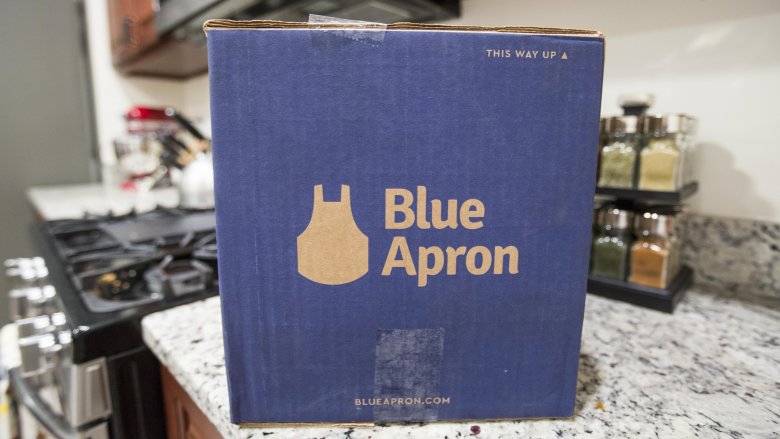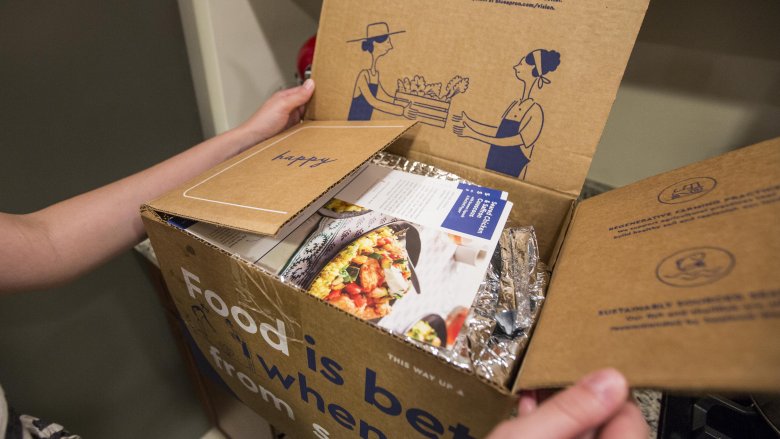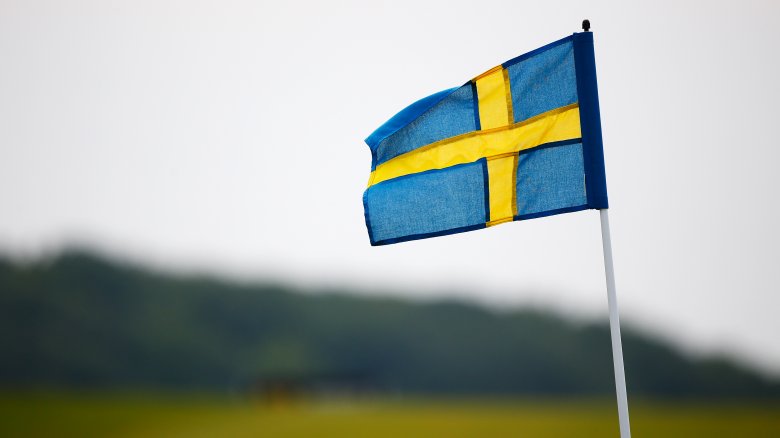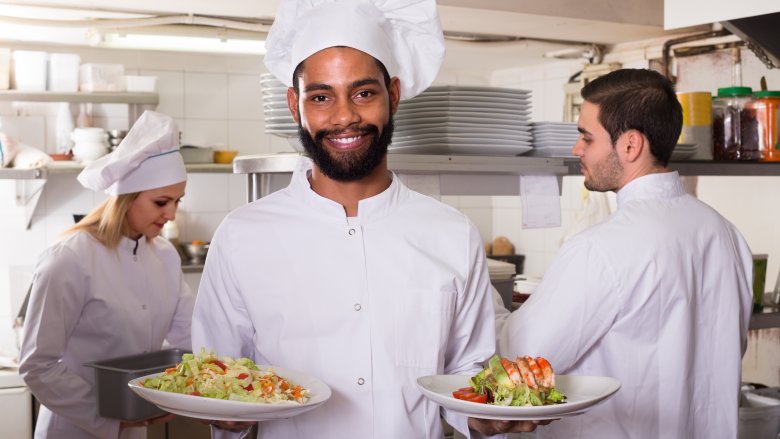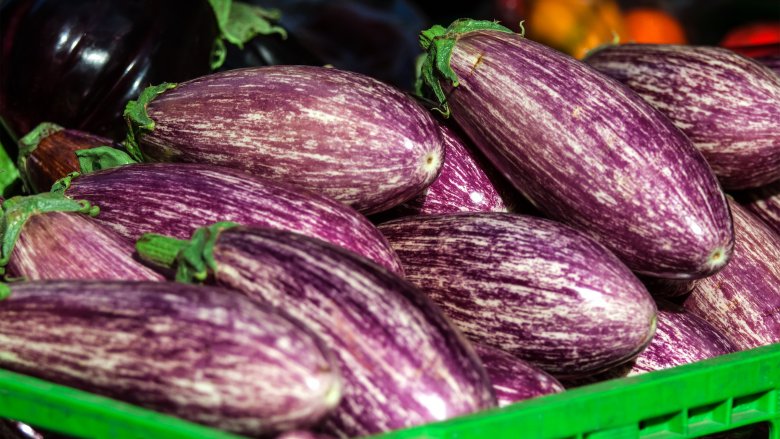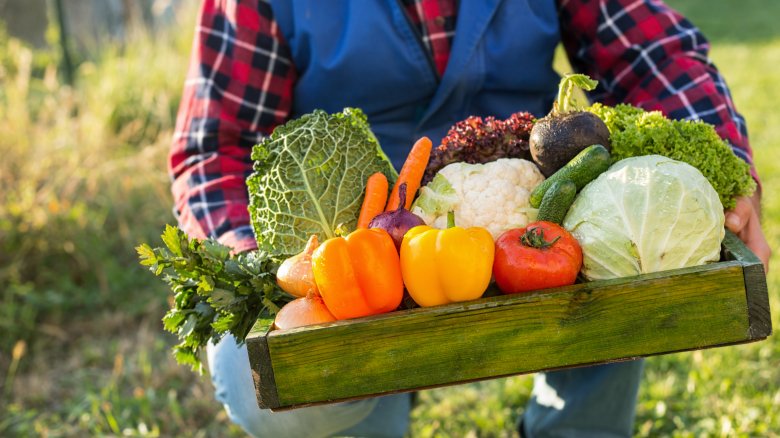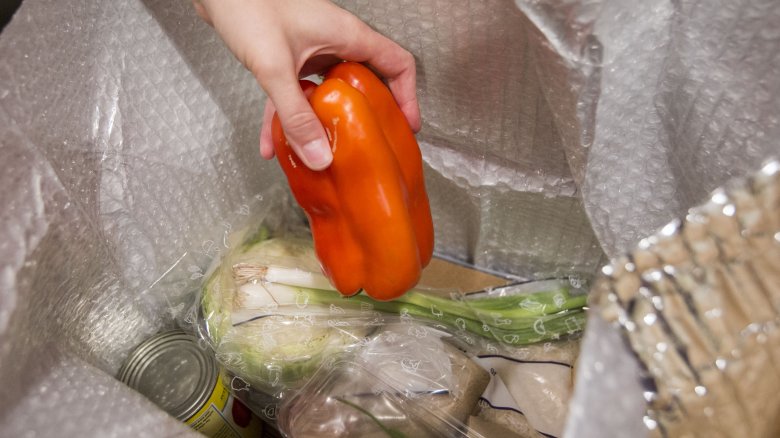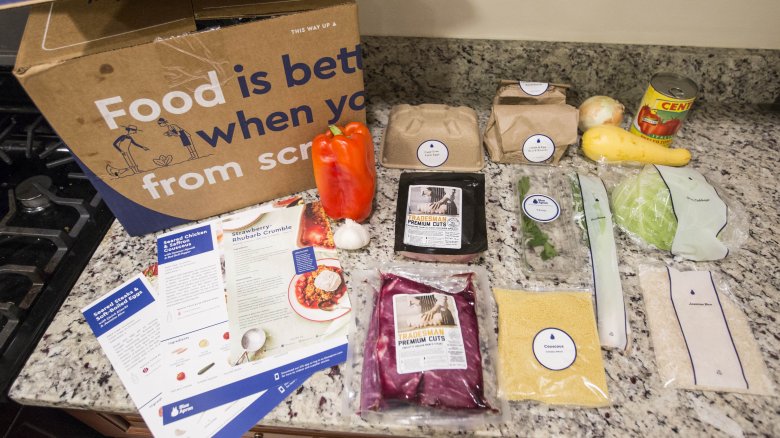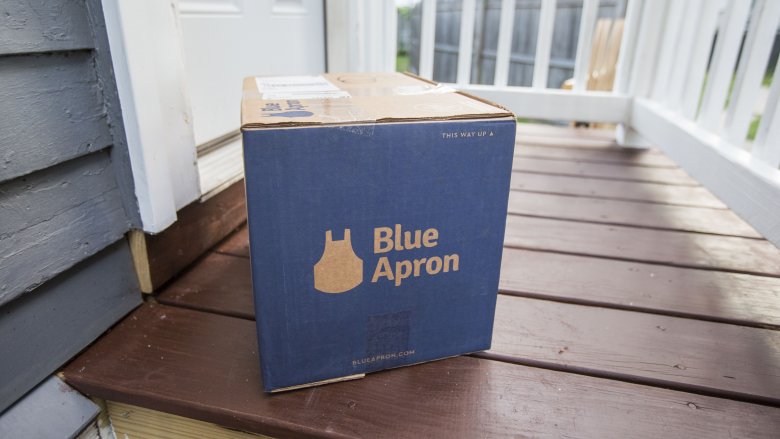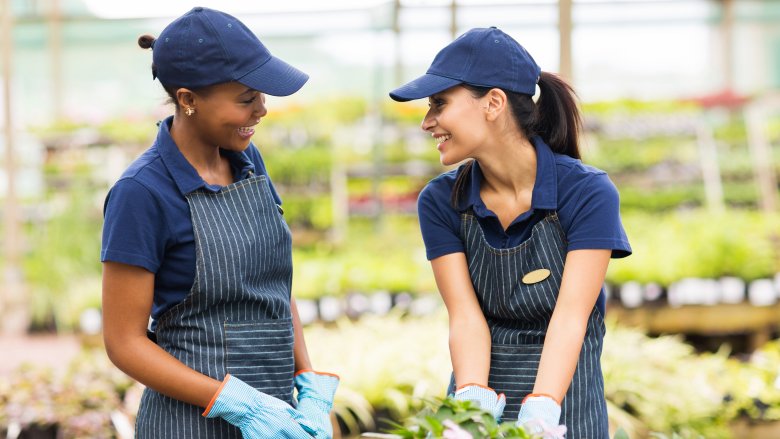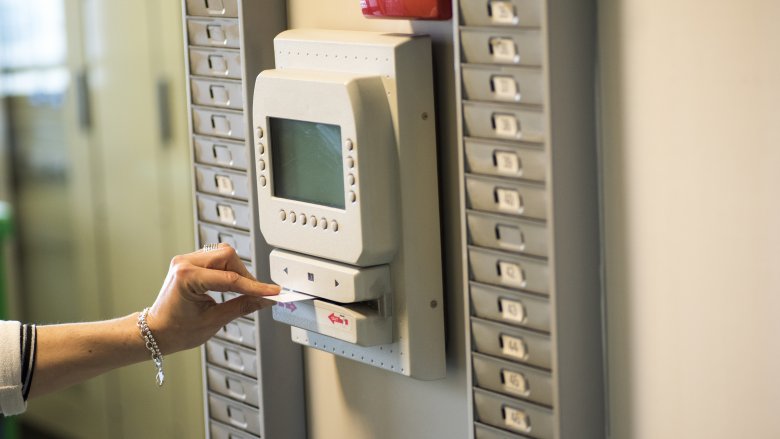The Untold Truth Of Blue Apron
We may receive a commission on purchases made from links.
Subscription meal kit services are suddenly everywhere, popping up on millions of doorsteps across the country. It's not surprising, given how convenient these kits are, that they're wildly successful. After all, they take out all of the guesswork for you, save you trips to the grocery store, and ensure you never lack in culinary inspiration. Plus they give you the satisfaction of preparing and cooking a home-cooked meal that's worthy of your Instagram feed. And Blue Apron is the king of them all, with more subscribers than any of their rivals. So what else is there to know about this venture-backed behemoth of a start-up? Here's what you need to know about Blue Apron.
They're worth billions
Blue Apron is worth billions, and is raking in the dough at a breakneck pace, exceeding even their own financial benchmarks according to Bloomberg News. In 2016, they made between $750 million and $1 billion of revenue, which is exponentially more than the $300-$400 million they initially pitched to investors. But that doesn't necessarily mean that they're swimming in gold coins a la Scrooge McDuck just yet, as they've been spending millions of dollars on facilities and infrastructure, hoping to heavily automate their processes. But they're poised to become a revenue machine, as long as they overcome growing pains and best the competition.
They're copycats
Blue Apron may be the titan of subscription meal kits, but that doesn't mean that they were the first one out there. According to Forbes, that honor belongs to a Swedish company called Linas Matkasse, who launched in 2008, four years before Blue Apron, Plated, and Hello Fresh. Linas Matkasse was making making about $45 million in revenue per year, and enjoying immense popularity in Sweden, a country where most households have two working parents. And since parents had less time for shopping and prepping, there was plenty of room in the market for a subscription meal service. It was this model that caught the eye of the founders of Blue Apron and other meal kit companies, who saw their success and decided to set up shop in the States.
It's probably cheaper than eating out
If you're a wizard in the kitchen and thrifty at the store, you likely aren't going to need a meal kit subscription service. But if you're like the many Americans who don't cook, instead relying on take-out or delivery for dinner, or dining out frequently, then a meal kit could be a cost-effective option for you. Blue Apron, the least expensive meal kit purveyor according to Consumer Reports, costs $9.99 per meal, which is markedly cheaper than dining out, which sometimes costs between $12 and $30 per person. That's significant savings.
It won't make you a chef
Blue Apron refers to its customers as home chefs, insinuating that they're skilled in the kitchen. And they also advertise that they can help you enjoy cooking at home, as well as set a good example for your family in the kitchen. But can Blue Apron make you a chef? According to Brandon Walsh, the Dean of Culinary Education for the Beginning Program at the CIA, it lacks the educational materials that could teach home cooks about technique. He told National Geographic, "For simple home cooking, understanding techniques is so much more important than having a recipe." And Blue Apron only gives you instructions on what to do, not why you do it. You'll still learn how to prepare a variety of ingredients, though, as well as how to use the tools in your kitchen.
They might use produce you've never heard of
Most people outside of the agriculture world likely might not have heard of fairy tale eggplants or Shokichi Shiro squash unless they saw it on an episode of Chopped. But Blue Apron aims to change that, featuring some unique fruits and vegetables in their meal kits that you can't get elsewhere as they've likely bought the entire market share. This not only means that Blue Apron customers have exclusive access to unique produce, but it also brings local flair and flavor to the brand.
They work with small farmers
Blue Apron actively works to make sure that the agricultural practices used to produce their ingredients are sound and attentive to regional needs. This is because they work with farmers — approximately 150 of them to date — to ensure that their ingredient needs are met. So the farmers know that what they plant is guaranteed to be bought, and Blue Apron can plan future recipes knowing that they'll have exactly what they need. And as Matt Salzberg, one of the co-founders of Blue Apron, told The Washington Post, working with small farmers is optimal for them. "It tastes better," he noted when discussing the produce they buy. "It's the quality control." So as long as there are farmers willing and able to grow the crops they need and raise the animals they use, it's likely that there will be a cooperation between Blue Apron and food producers.
The competition is fierce
It's not surprising that there's a ton of competition in the meal kit market given how diverse people's palates, preferences, and nutritional needs are. If you're vegan or looking for a plant-based service, there's Purple Carrot. If you want organic ingredients, there's Green Chef, who can also send you gluten free, paleo, or keto kits. The same options are available with Martha & Marley Spoon, which is endorsed by Martha Stewart — but if Jamie Oliver is more your flavor, he's thrown his weight behind Hello Fresh. There's also PeachDish, which bills itself as the Blue Apron alternative. And there are even more subscription services out there — you just have to look.
They generate a ton of waste
One of Blue Apron's stated goals is to improve the food system from the ground up, ensuring land is treated well, pesticides are kept to a minimum, and food isn't wasted. Those are good goals, and food waste especially is a huge problem in the United States. But as sustainable as their farming practices may be, what's not sustainable is their use of packaging, according to Buzzfeed. Since everything is pre-measured and individually sorted, each ingredient has its own separate packaging, much of it plastic. And some of the plastic may not be recyclable in your city of town, depending on your local recycling program. Additionally, there's all of the paper, cardboard, and foil to dispose of, which really adds up when you consider the scale of their distribution. While they may be saving on food waste, they're not helping with waste in general — they're contributing to it.
They grew super fast and it had consequences
Blue Apron has been tremendously successful. When they started, it was just the three founders — Matt Salzberg, Matt Wadiak and Ilia Papas — who packed meals in a small space in a commercial kitchen, nestled in a warehouse in Brooklyn. Now they deliver 8 million meals per week all over the country, just five years later. That's some seriously impressive growth. But with growth of this magnitude, there can be growing pains, and Blue Apron has definitely had its share. According to Buzzfeed, in their Richmond, California facility, they had a number of problems because they hired a huge, unskilled workforce very quickly to meet demand, but failed to look after and manage them properly. There were numerous safety incidents, and OSHA has proposed that Blue Apron pay more than $20,000 in fines.
There's been serious employee drama
Hiring such a huge swath of workers at a breakneck pace resulted in some serious drama at Blue Apron's Richmond facility. According to Buzzfeed, a host of incidents occurred there, ranging from bomb threats to weapon sightings. People would drink alcohol and smoke marijuana in the parking lot, and sometimes, fights would break out. There were also a number of instances of assault, resulting in arrests by the Richmond Police Department, for physical and sexual assault. And more than once employees threatened to bring a gun to work and shoot people. And it's not that Blue Apron didn't care or try; they hired a security firm, installed a surveillance system, and put metal detectors at the building entrances. But since the other warehouses in town did not have the same problems, many placed the blame on Blue Apron.
The workers mostly hate it
Employee drama aside, many former Blue Apron employees really did not like working there. According to Buzzfeed, workers at the Richmond warehouse complained that the environment was extremely frantic, comparing it to black Friday at Best Buy. Additionally, the warehouse was freezing because they had to keep the food items cold. And while Blue Apron did provide employees with warm clothing and a hat, for some it wasn't enough. Ad Andrew Driskell, a former warehouse lead told Buzzfeed,"Your fingers would start to get numb and start to hurt from using them." And the hours were tough, some employees working 12-hour shifts five or six days a week. Finally, Blue Apron implemented (then later discontinued) a points-based discipline system, which led to employees being suspended and fired for minor offences like clocking in a minute late.
